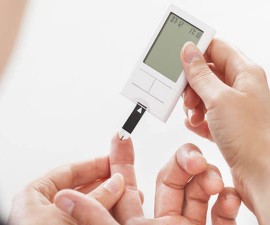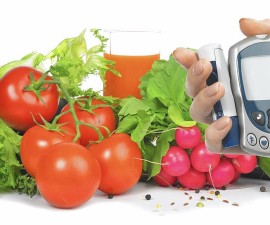Everyone needs to understand well about diabetes symptoms and treatments. Diabetes is a serious disease that could happen to anyone. In US alone, 30.3 million people or 9.4% of he population have diabetes. And a lot of those people didn’t realize they had diabetes or 1 in 4 people to be precise. The fact that so many people didn’t realize they had the disease is scary. Especially for type 2 diabetes, the symptoms may not be noticeable at all. And since type 2 diabetes is the most common type of diabetes (roughly 90-95% of cases in adults are type 2 diabetes), the number of people who didn’t realize they had the disease is staggering.
Diabetes is a disease caused by a high amount of blood glucose also known as blood sugar. Blood glucose is your body’s main source of energy and produces by the food you eat. Insulin, which is made by pancreas, helps distribute blood glucose from food into your cells and later be used for energy. This is where the problem starts, sometimes your body can’t produce insulin enough or well or even not at all. This causes blood glucose to stay in your blood instead of reaching your cells, thus increasing your blood sugar level. This causes many health problems, such as: heart disease and stroke, eye disease, foot problems and etc. Diabetes also linked to some types of cancer. We’ll explain about diabetes symptoms and treatments.
Types
there 3 known types of diabetes, they are classified based on how the body’s ability to produce insulin.
Type 1 Diabetes
This type of diabetes happens when the body’s immune system, the one that responsible to fight against infection, attacks and destroys the beta cells of the pancreas that produce insulin. This causes pancreas to unable to produce insulin. Without insulin, blood glucose will stay in your blood stream and increase the glucose level. Scientists believe that type 1 diabetes is genetic problems and may caused by viruses in the environment. There are studies on going that are trying to pinpoint the causes of type 1 diabetes.
Typically type 1 diabetes occurs in children and young adults, but there are some cases where type 1 diabetes also happens at any age. Since it’s also a genetic disease, if you have parents or siblings with the disease, it may increase your chance of having type 1 diabetes. As we know that about 10% of people with diabetes have type 1 diabetes severely.
Type 2 diabetes
The most common type of diabetes in the world often happen. Type 2 diabetes could be triggered by a lot of factors, including but not limited to lifestyle and genes. Eating, physical activity, and weight problems can lead to type 2 diabetes. People with type 2 diabetes, unlike type 1 diabetes still can produce insulin but the cells in the body do not respond to it well and the pancreas can’t make enough insulin to counter this. This causes the glucose level to increase overtime.
Type 2 diabetes is closely linked to obesity though not everyone with type 2 diabetes is overweight. Here are some pointers to watch out for: being overweight, age 45 or older, family history of diabetes, high blood pressure, and depression. It’s very common for people who live a sedentary life to catch the disease. Being inactive could lead to being overweight, the extra weight causes insulin resistance. It’s also said that extra belly fat is linked to insulin resistance. You should check your Body Mass Index (BMI) regularly, to see if your body weight is ideal or not.
Prediabetes
Prediabetes means that you have a higher-than-normal blood sugar level but still not high enough to be diagnosed as diabetic. Being diagnosed as prediabetes should serves as a warning to change your lifestyle before it’s too late. Untreated Prediabetes could lead to type 2 diabetes, heart disease and stroke.
Gestational Diabetes
A rare kind of diabetes that occurs during pregnancy. This happens when the body become less sensitive to insulin. Not all women suffer from Gestational Diabetes and usually the disease occurs after giving birth.
Symptoms
The main difference between Type 1 and Type 2 diabetes is the speed of the build-up. Type 1 diabetes can start quickly in a matter of weeks and the effect is so severe and potentially fatal. While Type 2 diabetes will develop slowly over several years and the effect could be mild that most people won’t notice. It’s always to be aware and responsive to all the symptoms of diabetes.
- Some symptoms of Type 1 diabetes i.e.an extreme hunger, increased thirst, frequent urination, blurry vision, Tiredness, extreme mood changes and drastic weight loss.
- Some symptoms of Type 2 diabetes i.e. increased urination, blurry vision, increased thirst, tiredness, increased hunger and occasional sores that are slow to heal
- Some symptoms Prediabetes. Unfortunately, there are no clear symptoms for Prediabetes. The most common symptom is discoloration (dark, thick and velvety patches on skin) on elbows, knees, neck, armpits and knuckles.
Treatments
For Type 1 diabetes, the main treatment is taking artificial insulin for the body. It replaces the hormone that your body can’t produce. There different types of insulin that you can take:
- Rapid-acting insulin. Works within 15 minutes and lasts for 3 to 4 hours.
- Short-acting insulin. Works within 30 minutes and lasts for 6 to 8 hours.
- Intermediate-acting insulin. Works within 1 to 2 hours and lasts 12 to 18 hours.
- Long-acting insulin. Works within a few hours and lasts 24 hours or longer.
For Type 2 diabetes and prediabetes the treatment is a change of lifestyle and if a change of lifestyle doesn’t work, you’ll need to take medications. A change of lifestyle will work amazingly for all types of diabetes. Exercise more to keep your body active, get a better diet and eat less calories. Getting your more body more active than before will also increase your overall happiness while reducing stress. This is even more important for people who don’t have diabetes to begin with, it’s better to prevent than to cure. We hope that knowing diabetes symptoms and treatments will save your or others’ lives.




